This strengthened Quality Standards activity pack is designed for providers to deliver to their own staff. This pack can be delivered in full or used as a series of lesson plans for sessions on applying each of the strengthened Standards to your residential services setting.

This visual scenario and supporting user guide has been designed to support aged care workers with information about eating and drinking with acknowledged risk (EDAR). It explains the best practice and practical strategies that providers should use when implementing EDAR in their service.
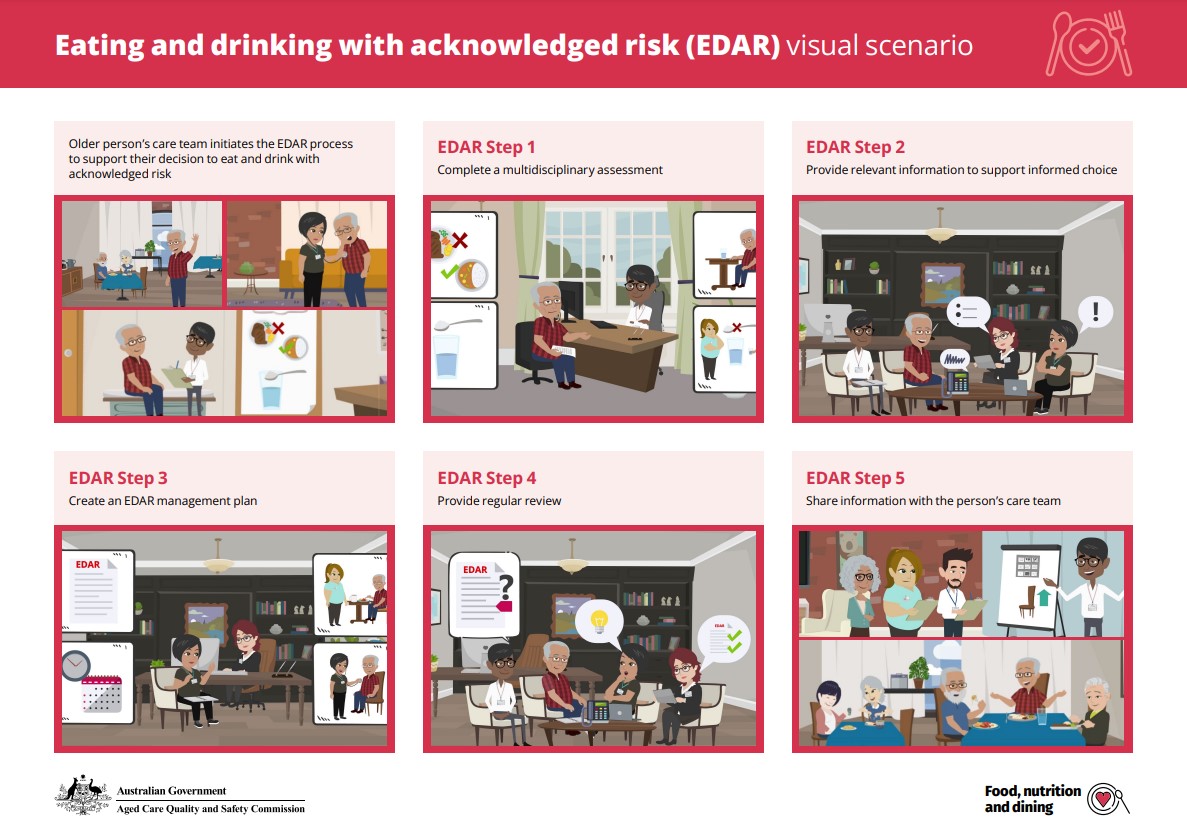
Our Regulatory Strategy sets out how the Commission will deliver on our goals and commitments. This resource may refer to information that will be updated from 1 July 2025 to align with the new Aged Care Act and Quality Standards.
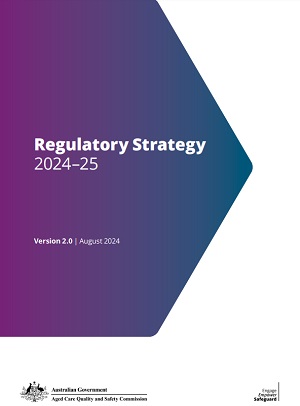
Use this checklist to ensure you allocate time, at least annually, to review the procedures you have in place to ensure you are meeting your provider governance obligations.

Use this discussion guide in consumer advisory body meetings to help start conversations and encourage ideas on important topics.

To Dip or Not to Dip (TDONTD) is a quality improvement intervention successfully implemented in UK and Australian aged care homes to improve UTI assessment and antibiotic prescribing appropriateness.
This implementation guide has been drawn from the experiences of homes and champions who have implemented TDONTD, along with feedback from aged care nurses and personal care assistants who have used TDONTD resources.
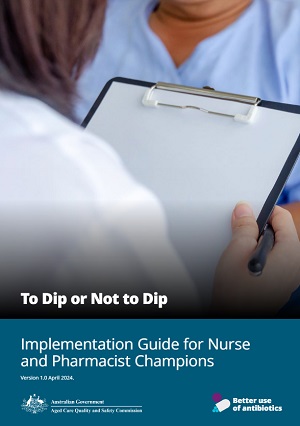
This quick survey is a reflection tool on urine dipstick practice in your facility.
Is there room for improvement?
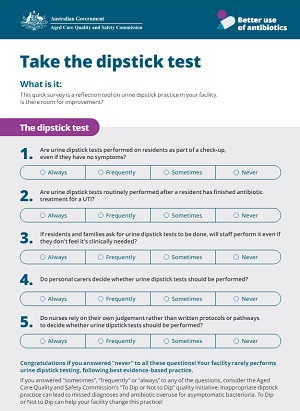
This huddle tool poster provides guidance on appropriate use of urine dipstick tests in older adults. It explains that asymptomatic bacteriuria (ASB) is common and not harmful, but that unnecessary antibiotic treatment can be. It suggests confirming urinary tract infections (UTIs) through clinical symptoms rather than dipstick results.
This resource may refer to information that will be updated from 1 July 2025 to align with the new Aged Care Act and Quality Standards.
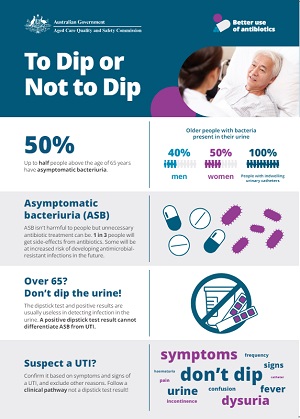
This visual abstract presents outcomes from a quality improvement project aimed at reducing low-value urine dipstick testing in aged care services. It included nurse education, implementing clinical pathways for UTI identification, and evaluating urinalysis practices and antibiotic prescribing. The findings demonstrate improved antibiotic prescribing appropriateness for UTIs over a 6-month follow-up period.
This resource may refer to information that will be updated from 1 July 2025 to align with the new Aged Care Act and Quality Standards.
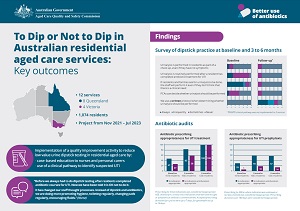
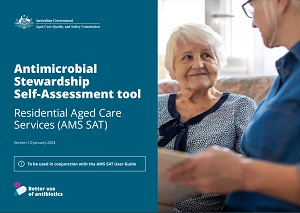
This workshop has been designed for home services providers and will help you to:

This Regulatory Bulletin explains what procedural fairness is.
It also explains the circumstances where the Aged Care Quality and Safety Commission must provide procedural fairness and our approach to providing procedural fairness when making decisions.

As the national aged care regulator, part of the Commission’s role is to assess the performance of providers against the Aged Care Quality Standards. This fact sheet for providers explains how we apply procedural fairness to our regulatory decisions.

‘Additional care or services’ are care and services that are offered to residents of a residential aged care service by their provider, in addition to those that their provider is required to provide by law. By agreement with the resident, an approved provider can charge fees for additional care and services.
This Regulatory Bulletin outlines the expectations of the Commission relating to providers’ responsibilities around the charging of fees for additional care and services. It also outlines the Commission’s response where a provider does not meet their responsibilities.

This video explains the purpose and importance of the Prudential Standards. It outlines the responsibilities of aged care providers in managing refundable deposits and what they need to do to comply. It also discusses the consequences of not complying plus additional resources that can help.

Letter to general practitioners and nurse practitioners to seek support in a quality improvement intervention being undertaken in Australian residential aged care services (RACS), to address overprescribing of antibiotics for aged care residents for urinary tract conditions including asymptomatic bacteriuria.
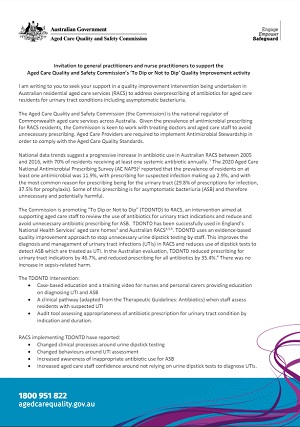
This paper presents a high-level overview of contemporary evidence regarding food services in residential aged care settings.

RB 2022-16 This Regulatory Bulletin outlines the changes to administration and management charges in the Home Care Packages (HCP) Program and the requirements for approved providers as set out in the changes to aged care legislation.

Complete this form to provide the Commission with:
(a) any information required and not provided in a Priority 1 notice; and/or
(b) any further information specified by the Commissioner under subsection 95C(1) of the Aged Care Quality and Safety Commission Rules 2018.

Complete this form if the Commission requires you to give specified further information about a Priority 2 reportable incident under subsection 95C(2) of the Aged Care Quality and Safety Commission Rules 2018.









